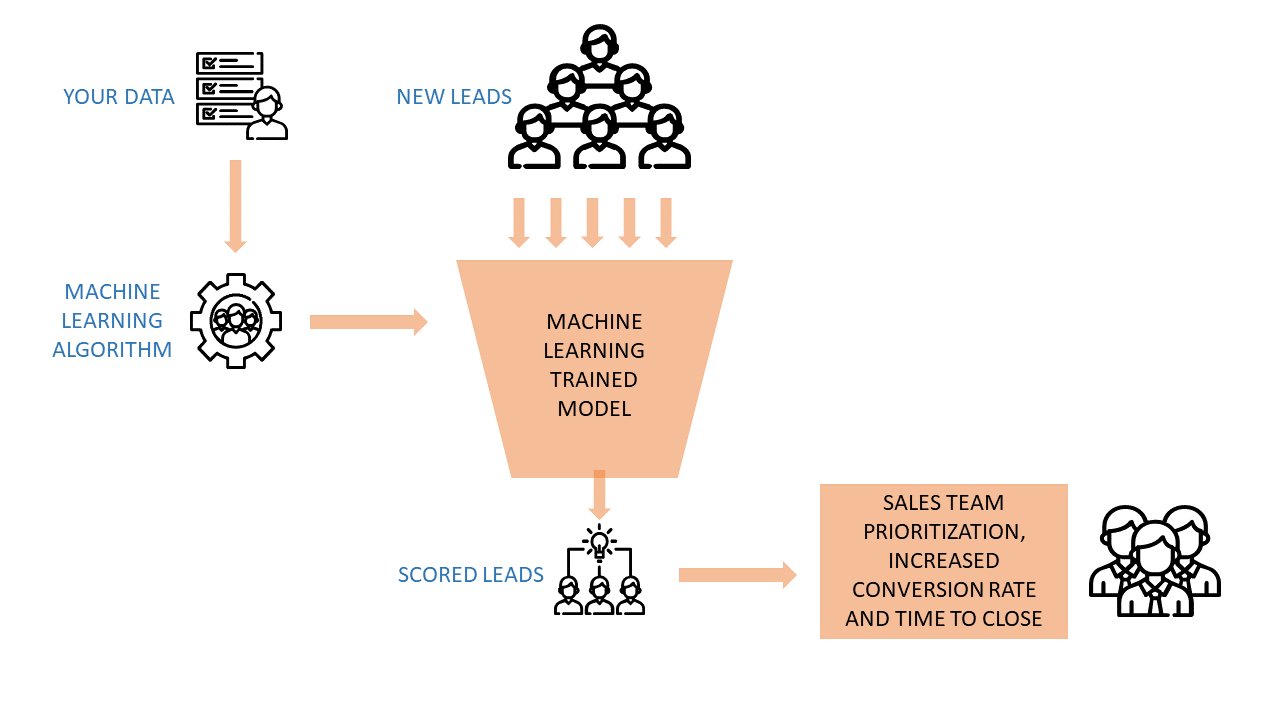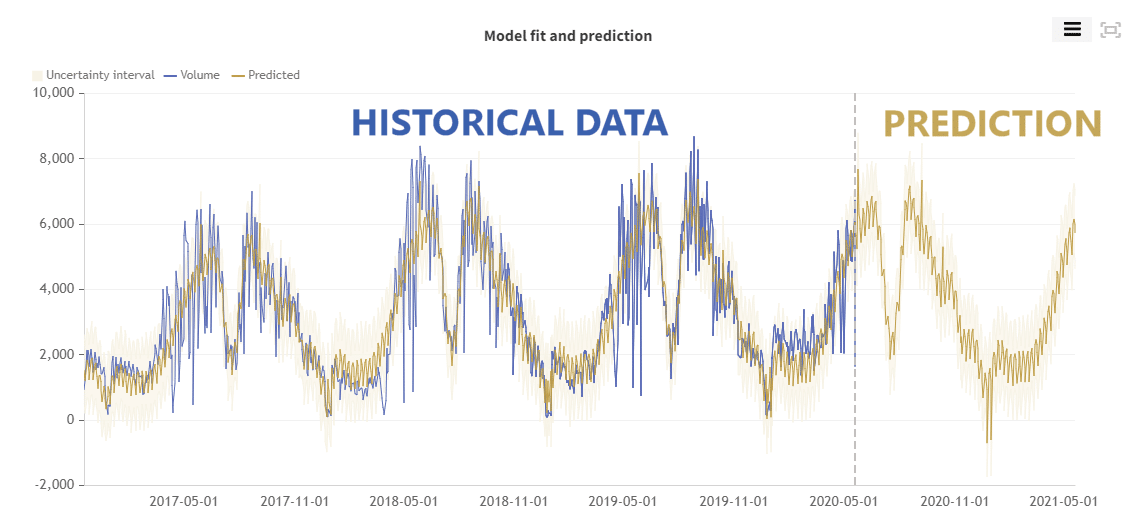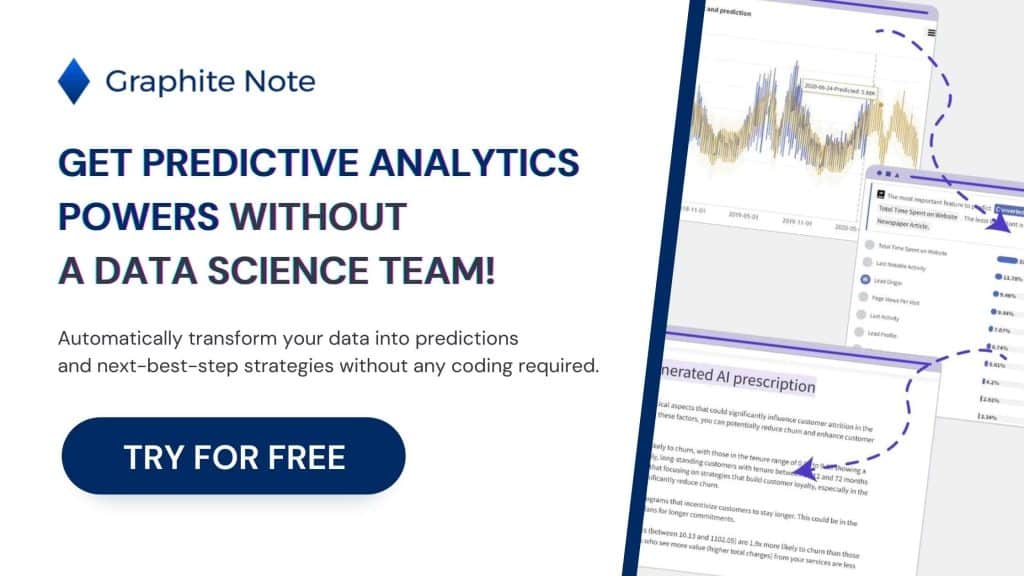Implementing predictive analytics into your business intelligence workflows can supercharge your decision-making process. Go beyond descriptive analytics, and usher in predictive analytics. Predictive analytics are an imperative for business intelligence.
What is Predictive Analytics?
Predictive analytics models use historical data, statistical algorithms, and machine learning techniques to forecast future outcomes. Analyzing patterns and trends, predictive modeling techniques give you valuable insights into future outcomes. These insights enable you to make proactive decisions. Predictive analytics use statistical models and forecasting techniques to understand future performance. Using historical data, predictive analytics helps you prepare for various business scenarios. Predictive analytics gives you a glimpse into your business’ future. Predictive analytics can help you identify potential opportunities and risks. This helps you to make proactive decisions. Predictive analytics is an invaluable tool in the world. On the other hand, prescriptive analytics help you strategize. Prescriptive analytics recommend specific actions to achieve your desired outcomes. Prescriptive analytics provide recommendations on the optimal course for your business decisions.

Types of Predictive Analytics
Machine learning algorithms are commonly used in predictive analytics techniques. Machine learning algorithms include regression models, regression analysis, data mining, classification models, and clustering. These algorithms analyze the historical data, or training data, and learn from it. The algorithms then apply the learned patterns to make predictions on new, unseen data. Time series models assess recorded data over time to forecast or predict what might happen in the next time period. A time series model operates on the assumption that future trends will be similar to historical trends. Time series forecasting is a predictive analytics technique. Time series forecasting is used across many fields. Time series forecasting has been a staple of data analysis for most of the modern era. Predictive analytics can improve customer service, enhance supply chain management, improve patient outcomes, and help with strategic decision making. Neural networks are often found to be ideal for modeling complex relationships. Types of neural networks include multilayer perceptron (MLP), convolutional neural networks (CNN), and recurrent neural networks (RNN).Business users can rely on predictive analytics and machine learning models to predict potential future outcomes. There are a wide range of uses for predictive analytics for business users, to manage big data tasks. including business intelligence organizations. Data analytics gives your business intelligence agency actionable insights to power up your decision making processes. Data-driven decision making backed by predictive business analytics empowers your business intelligence team.

How to Use Predictive Analytics for Business Intelligence
To get started with using predictive analytics tools for your business intelligence:
- Gather a range of diverse, high-quality data sets.
- Choose the right machine learning model for your specific needs.
- Analyze the data and generate predictions.
- Use these predictions to drive action.
Tools like Graphite Note make this process simple. You don’t need complex coding or data science expertise.
Benefits of Integrating Predictive Analytics in Business Intelligence
Integrating predictive analytics into your BI workflows, you move beyond historical analysis. You get a forward-looking perspective, mitigate risks, and identify opportunities. This integration empowers you to optimize key business processes. You can make data-driven decisions with confidence. The advanced analytics help you anticipate challenges and develop proactive strategies. Predictive analytics help you uncover hidden patterns for growth and innovation. Predictive analytics also support the enhancement of customer experiences and retention. No-code predictive analytics tools like Graphite Note bolster your business intelligence. And, you don’t need a team of data scientists to use predictive analytics.
Implementing Predictive Analytics in Your Business Intelligence Workflows
Follow these steps to integrate predictive analytics into your business intelligence workflows:
1. Identify Your Needs: Pinpoint areas where predictive analytics can add the most value to your business. This could involve customer behavior, sales forecasting, fraud detection, or operational efficiencies.
2. Choose the Right Tools: Select predictive analytics tools that fit your organization’s needs. Considering factors like ease of use, scalability, and integration capabilities. Tools like Graphite Note offer robust features for various predictive analytics techniques.
3. Integrate with Existing Systems: Align predictive analytics with your current BI systems. You’ll need to connect data sources and establish data pipelines. This ensures seamless data flow and maximizes the utility of predictive insights.
4. Address Challenges: There are some challenges associated with integrating predictive analytics into your business intelligence workflows. You’ll need to ensure:
- Good data quality: Ensure data quality through cleansing and validation processes. The accuracy of predictive models depends on the quality of the training data.
- User Adoption: Provide adequate training to drive user adoption. Tools like Graphite Note simplify the learning curve with their user-friendly interfaces.
- Managing Model Complexity: Manage the complexity of predictive models. Tools that offer no-code or low-code solutions can help bridge the skill gap.
5. Measure Success: Use Key Performance Indicators (KPIs) to assess the effectiveness of your predictive models. Your KPIs will help you define how predictive analytics affects and supports your business. Continuous monitoring and refinement of models are vital for sustained success.
6. Continuous Improvement: Regularly refine your models. Gather feedback, monitor performance, and incorporate new data. This iterative process ensures that your predictive analytics solutions remain relevant and accurate.
Real-World Predictive Analytics Examples
Healthcare: Predictive analytics can improve patient care, reduce hospital readmission rates, and forecast equipment maintenance needs. These are based on healthcare data and patient data. Healthcare providers can use electronic health records to provide robust data for machine learning. Healthcare organizations and healthcare professionals already rely on different types of predictive models for chronic disease management, improving health care and enabling better patient outcomes. Healthcare organizations, like Kaiser Permanente use predictive models to identify patients at risk of rapid deterioration, enabling timely intervention and reducing mortality rates. Predictive analytics supports the healthcare industry and enables better health outcomes for patients across the globe.
Marketing: In marketing, predictive analytics can forecast sales trends, optimize campaign strategies, and enhance customer targeting. When analyzing historical purchase data, businesses can predict future buying behaviors and tailor their marketing efforts. Data mining techniques, Artificial Intelligence, and machine learning help marketers predict future events with ease, so they can make a strategic decision to proactively manage these situations.
Manufacturing: Predictive analytics helps in optimizing supply chain management, preventing equipment malfunctions, and improving production efficiency. Rolls-Royce, for example, uses predictive models to customize maintenance schedules for aircraft engines, reducing downtime and operational costs.
Human Resources: HR departments use predictive analytics to predict employee turnover, optimize hiring processes, and enhance employee engagement. Google, for instance, uses predictive models to identify employees at risk of leaving and to improve hiring success rates.


The Future of Predictive Analytics in BI
As predictive analytics becomes increasingly critical in BI workflows, your business will benefit from adoption. Using tools that democratize predictive analytics, you can unlock your data’s full potential. Graphite Note helps you bolster your business intelligence without needing to know how to code. Implementing predictive analytics is an ongoing process.
Stay committed to continuous improvement. You’ll reap the rewards of data-driven decision-making in your business.




